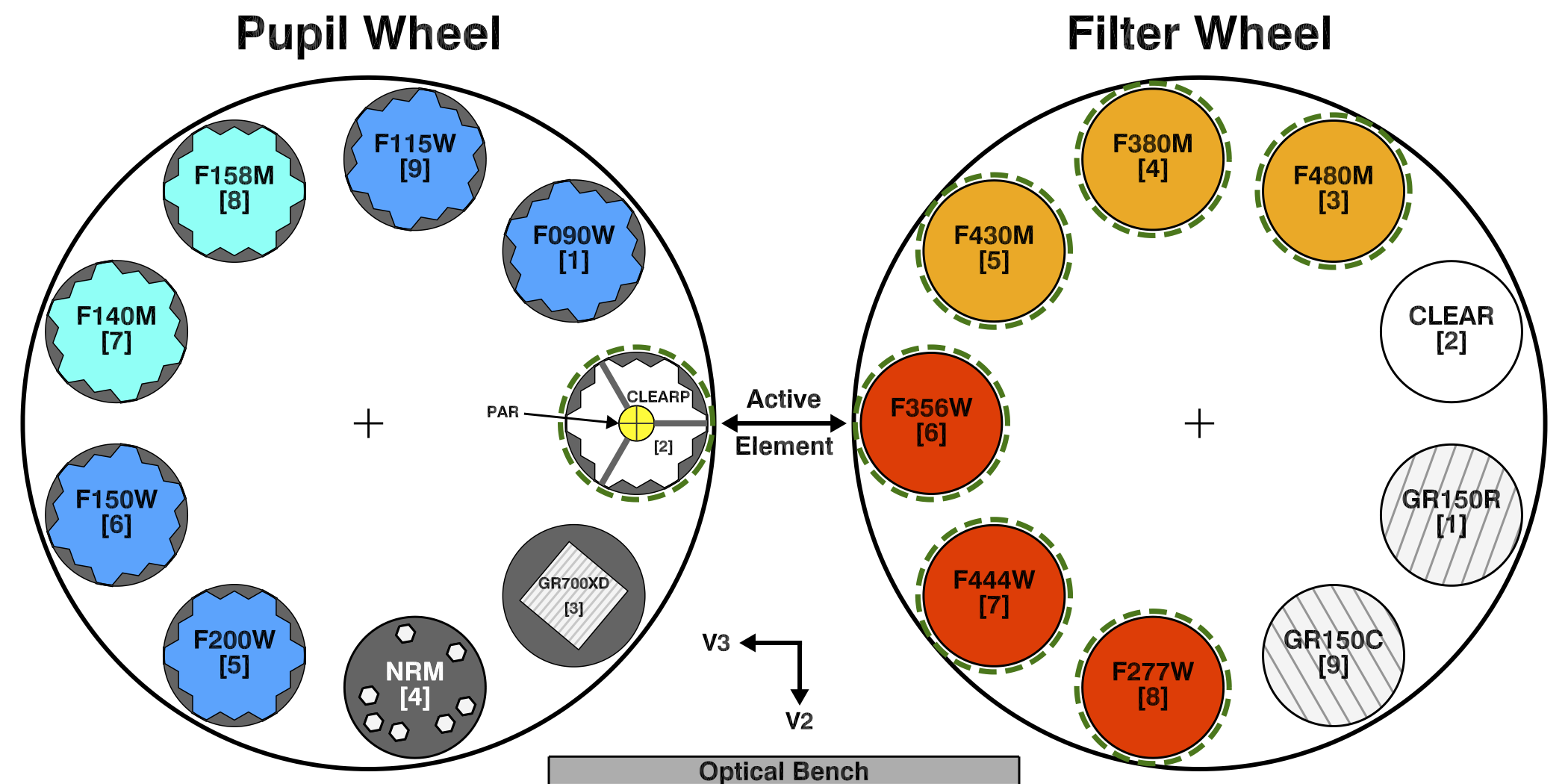NIRISS Imaging
The Near Infrared Imager and Slitless Spectrograph (NIRISS) imaging mode enables standard multi-wavelength imaging over the NIRISS detector's 2.2' × 2.2' field of view with an image scale of 0.066"/pixel"/pixel, using a suite of 12 filters to cover the wavelength range 0.8–5.0 μm.
On this page
Starting in Cycle 2, NIRISS imaging is supported as a prime observing mode. Imaging is also a fundamental component of the wide field slitless spectroscopy (WFSS) mode of NIRISS.
NIRCam is the primary near-infrared imager for JWST. However, there are science cases in which a user may prefer to use NIRISS imaging:
- NIRISS is more sensitive to low surface brightness features between 0.8–2.5 μm than NIRCam, which is applicable to science goals like studying galactic tidal tails at "cosmic noon" (z ~ 2), due to the larger pixel scale of 0.066"/pixel compared with the pixel scale of NIRCam short wavelength channel (0.031"/pixel).
- NIRISS offers a "simple" field of view of 2.2' × 2.2' while NIRCam offers 2 modules each covering 2.2' × 2.2' with a 44" gap between modules, and 4"–5" gaps between detectors within each module in the short-wavelength channel. For cases where the position of a target is not known to great accuracy (e.g., tens of arc seconds), such as target of opportunity requests to identify electromagnetic counterparts to gravitational wave sources, NIRISS may be preferable to optimize observation planning. Without precise astrometry, observations with NIRCam run the risk of the target of interest falling in a detector or module gap.
- For science programs using the NIRISS WFSS mode, a direct image is taken before and after each set of grism exposures in a filter. Some observers may choose to take additional imaging exposures in filters in which they do not take grism exposures. NIRISS imaging in this case would optimize both the science return, by using the same instrument set-up as the WFSS observations, and observing efficiency, by saving on observatory overheads associated with switching to another instrument.
Imaging exposures
See also: NIRISS Pupil and Filter Wheel, NIRISS Filters, NIRISS Wide Field Slitless Spectroscopy
Target acquisition is not needed for the imaging mode.
Exposures with short wavelength filters in the pupil wheel (PW) are implemented in combination with the CLEAR aperture in the filter wheel (FW). For imaging with any of the long wavelength filters located in the FW, the CLEARP aperture is used in the PW.
Imaging filters
See also: NIRISS Filters
NIRISS has 12 filters in the pupil (PW) and filter wheels (FW) that collectively cover the wavelength range between 0.8 and 5.0 μm.
The PW carries 4 wideband (F090W, F115W, F150W, F200W) and 2 medium-band (F158M, F140M) filters, all of which are centered at wavelengths shorter than 2.3 μm.
The FW has 3 wideband (F277W, F444W, F356W) and 3 medium-band (F430M, F380M, F480M) long wavelength filters.
Imaging subarrays
See also: NIRISS Detector Subarrays
The NIRISS imaging mode will use the entire detector array to obtain direct images for the wide field slitless spectroscopy (WFSS) mode and parallel science observations. Calibration data will be taken using subarrays; details are available in the NIRISS subarrays page.
Imaging dither patterns
See also: NIRISS Dithers
Dithering is important for direct imaging observations with NIRISS, in particular at wavelengths ≤3 μm where the PSF is signficantly undersampled. Details of available patterns for different modes are available in the NIRISS Dithers article.
References
Fullerton, A., 2016, ESAC JWST "On Your Mark" Workshop (powerpoint file)
NIRISS: Imaging and Interferometry


